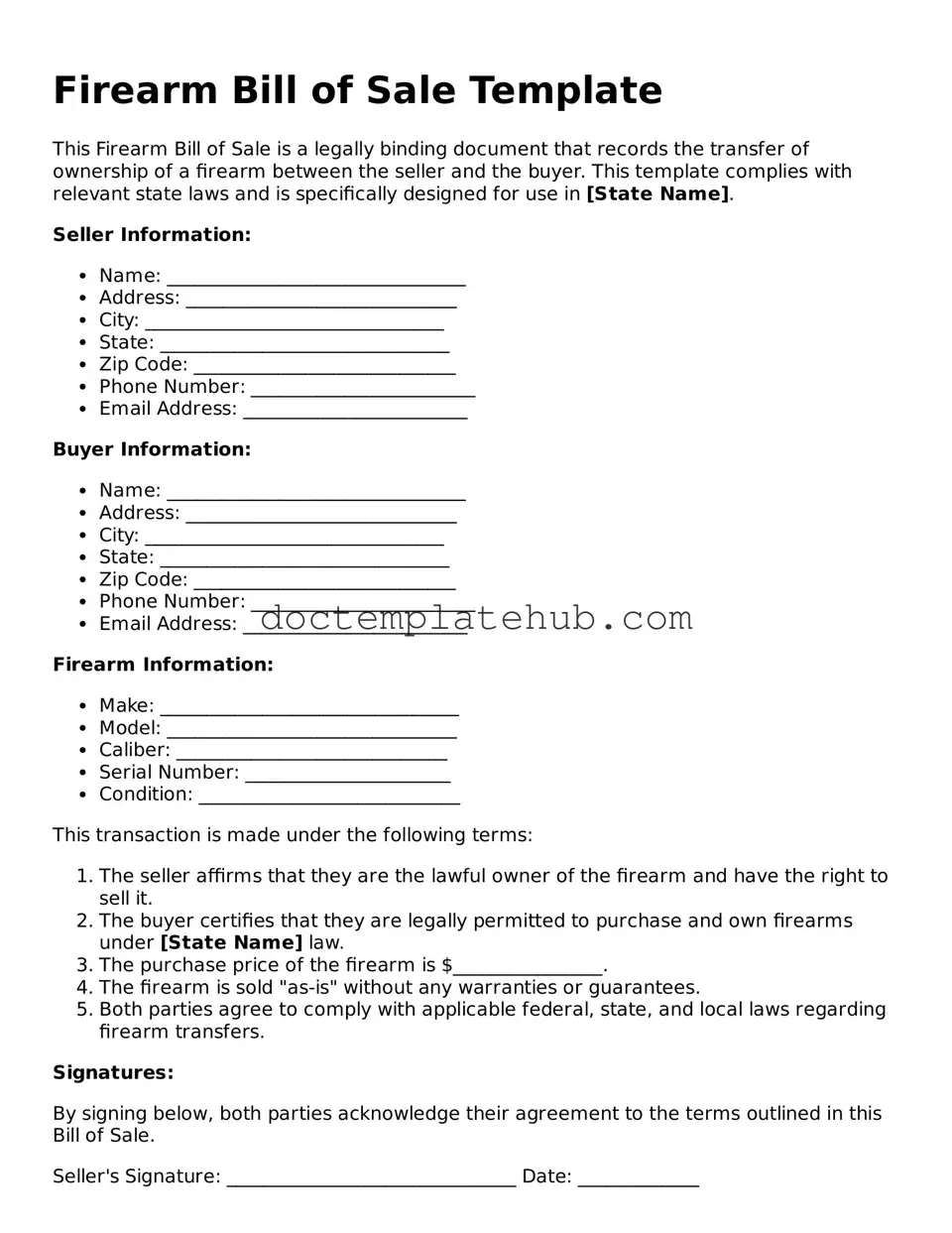What is a Firearm Bill of Sale?
A Firearm Bill of Sale is a legal document that records the sale or transfer of a firearm between two parties. This document serves as proof of the transaction and includes essential details such as the names of the buyer and seller, the date of the sale, and a description of the firearm. It helps to establish ownership and can be important for legal purposes.
Is a Firearm Bill of Sale required by law?
The requirement for a Firearm Bill of Sale varies by state. Some states mandate that a bill of sale be completed for all private firearm transactions, while others do not have such a requirement. It is important to check local laws to understand the regulations in your area regarding firearm sales.
What information should be included in a Firearm Bill of Sale?
A comprehensive Firearm Bill of Sale should include the following information: the names and addresses of both the buyer and seller, the date of the transaction, a detailed description of the firearm (including make, model, caliber, and serial number), and the purchase price. Additionally, both parties should sign and date the document to validate the sale.
Can I create my own Firearm Bill of Sale?
Yes, individuals can create their own Firearm Bill of Sale. However, it is crucial to ensure that the document includes all necessary information and complies with state laws. Many templates are available online that can help guide the creation of a valid bill of sale.
Do I need to have the Firearm Bill of Sale notarized?
Notarization is not universally required for a Firearm Bill of Sale. Some states may recommend or require notarization to add an extra layer of authenticity, while others do not. It is advisable to check local laws to determine if notarization is necessary in your jurisdiction.
What if the firearm is being sold between parties in different states?
When a firearm is sold between parties in different states, federal laws and the laws of both states must be considered. Generally, the sale should be conducted through a licensed dealer to ensure compliance with all regulations. A Firearm Bill of Sale can still be used, but it should reflect that the transaction involves interstate commerce.
What happens if the Firearm Bill of Sale is lost?
If a Firearm Bill of Sale is lost, it may complicate the process of proving ownership. It is advisable to keep a copy of the bill in a safe place. In some cases, a duplicate can be created if both parties agree and can provide the necessary details of the original transaction.
Can a Firearm Bill of Sale be used in a legal dispute?
Yes, a Firearm Bill of Sale can serve as evidence in a legal dispute regarding ownership or the terms of the sale. It is important for both parties to retain a copy of the document, as it can help clarify the agreement and protect their interests if any issues arise.
